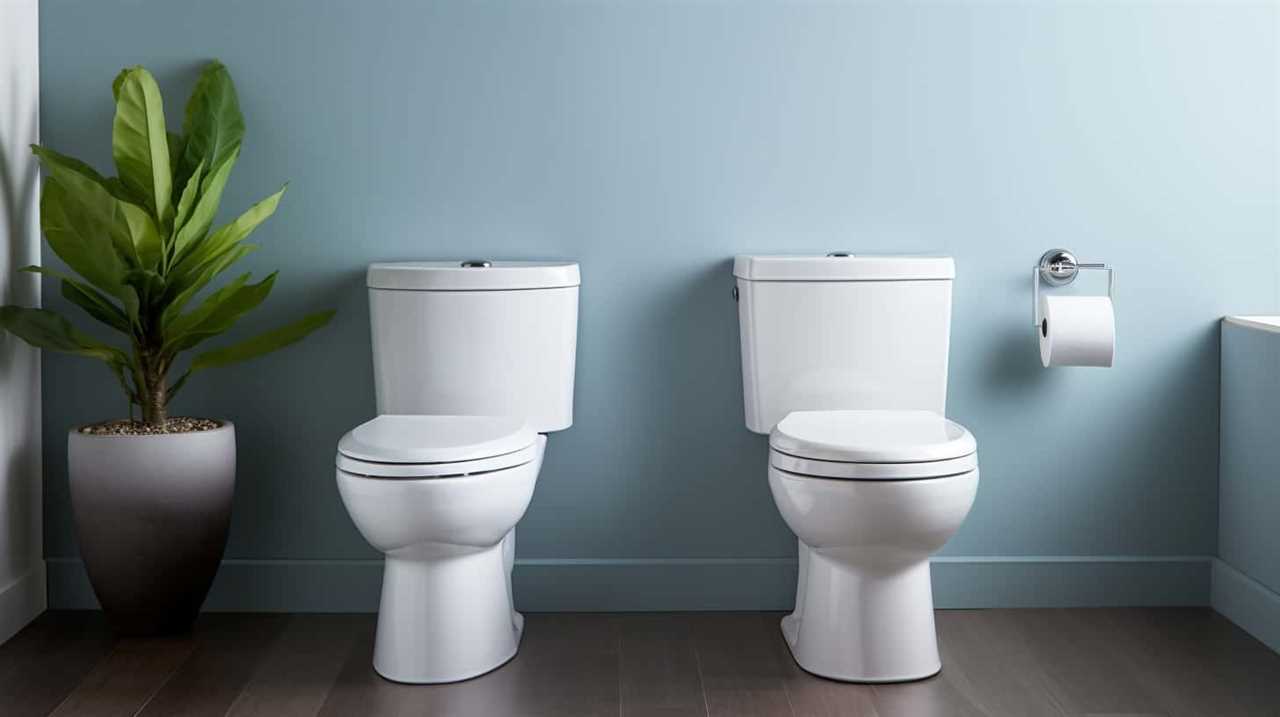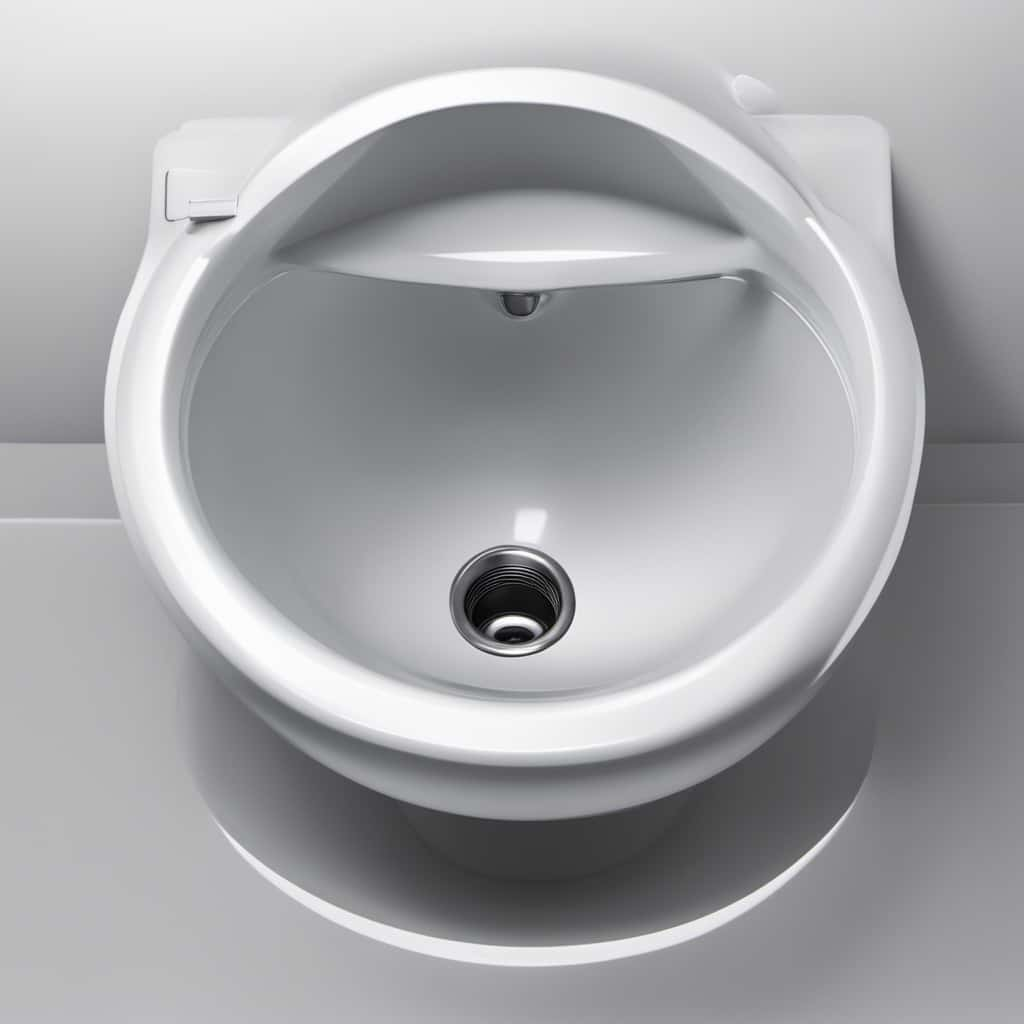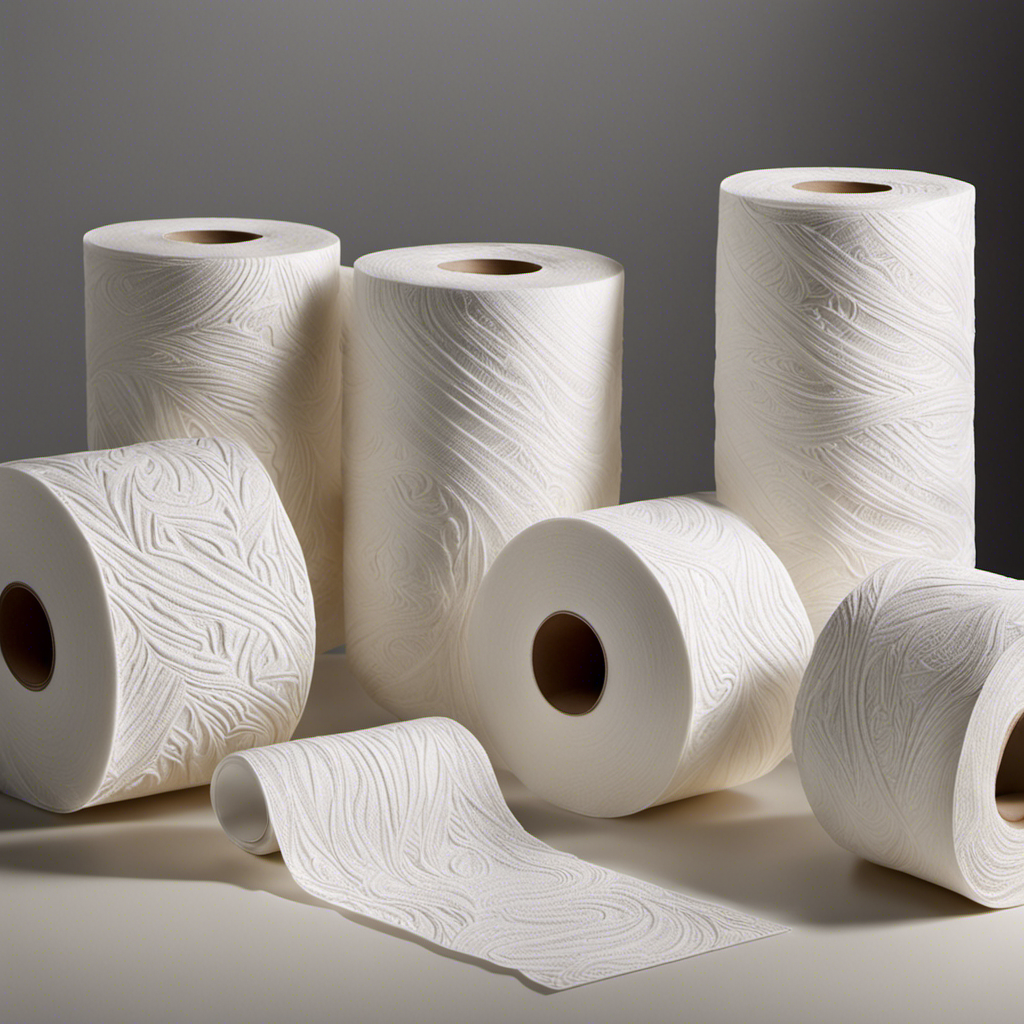- Flapper troubleshooting
- Water leakage prevention
Welcome to our comprehensive guide on how toilets work!
Today, we will delve into the fascinating realm of the toilet tank and its various components.
Ever wondered what that mysterious part of the toilet that fills with water is called? Look no further!
In this article, we will uncover the secrets of the fill valve, the float, the flapper, and the overflow tube.

Get ready to master the intricate mechanics of your porcelain throne!
Key Takeaways
- The part of the toilet that fills with water is called the toilet tank.
- Regular maintenance of the toilet tank is important to prevent issues.
- The fill valve regulates water flow into the tank and ensures proper water level.
- The float and the flapper play important roles in regulating water levels and allowing water flow during flushing.
The Toilet Tank and Its Components
In the toilet, the part that fills with water is called the toilet tank, and it’s where we store and supply water for flushing. The toilet tank plays a crucial role in the proper functioning of the toilet, and regular maintenance is essential to prevent any issues.
To ensure the optimal performance of the toilet tank, it’s important to periodically inspect and clean the tank. This involves checking for any leaks, cracks, or worn-out parts that may affect the tank’s ability to hold water.
Troubleshooting toilet tank issues may include adjusting the water level, replacing faulty components like the fill valve or flapper, and addressing any water pressure problems.

The Fill Valve: the Water Control Mechanism
To control the flow of water into the toilet tank, we rely on the fill valve. The fill valve is an essential component of the toilet’s water control mechanism. It’s responsible for regulating the water level in the tank and ensuring that it refills properly after each flush.
Common problems with the fill valve include issues such as leaks, excessive noise, and slow or inadequate filling. These problems can be caused by a variety of factors, including worn-out seals, clogs, or improper installation. Troubleshooting the fill valve involves checking for any visible leaks, cleaning or replacing faulty parts, and adjusting the water level if necessary.
There are different types of fill valves available in the market, including ballcock fill valves, diaphragm fill valves, and float-cup fill valves. Each type has its own advantages and disadvantages, such as durability, water efficiency, and ease of installation. Choosing the right fill valve for your toilet depends on factors like your water pressure, budget, and personal preference.
The Float: Regulating Water Levels
The float plays a crucial role in regulating the water levels of the toilet tank, ensuring proper functioning of the fill valve and maintaining the desired water level. It’s a simple yet effective mechanism that allows for accurate water level adjustment.

Here’s how it works:
- The float, typically made of plastic or metal, is attached to a lever arm.
- As water fills the tank, the float rises.
- When the float reaches a certain height, it triggers the fill valve to shut off the water supply.
- If the water level drops below the desired level, the float drops, causing the fill valve to open and refill the tank.
The Flapper: Allowing Water Flow Into the Toilet Bowl
Now, let’s delve into the role of the flapper, which is responsible for allowing water to flow into the toilet bowl, ensuring proper flushing frequency and functionality.
The flapper is a rubber or silicone disk that’s attached to the toilet flush valve. When the toilet is flushed, the flapper is lifted, allowing water to flow from the tank into the bowl. It’s crucial for the flapper to form a tight seal to prevent any leaks or water loss.
Over time, the flapper may become worn or damaged, leading to issues such as continuous running or incomplete flushes. To troubleshoot flapper issues, one can try adjusting the chain length or cleaning the flapper.

If these measures don’t resolve the problem, it may be necessary to replace the flapper with a new one.
The Overflow Tube: Preventing Flooding
As we continue our discussion on toilet components, let’s turn our attention to the overflow tube, an essential part of the toilet that prevents potential flooding.
The overflow tube serves a crucial purpose in preventing water damage and troubleshooting common issues. Here are three key functions of the overflow tube:
- Preventing overflow: The overflow tube ensures that water doesn’t reach the brim of the toilet bowl by providing an alternative route for excess water to flow into the drain.
- Maintaining water level: It helps to maintain the correct water level in the toilet bowl by directing the excess water into the drain, preventing it from overflowing.
- Avoiding tank damage: The overflow tube prevents the tank from accumulating excessive water pressure, which could lead to cracks or other damages.
To prevent water damage and troubleshoot common issues, it’s essential to regularly inspect the overflow tube for any clogs, leaks, or blockages.

Frequently Asked Questions
How Does the Toilet Tank Connect to the Toilet Bowl?
The toilet tank connection to the toilet bowl is facilitated by a mechanism that allows water to flow from the tank into the bowl. This mechanism ensures proper flushing and refilling of the bowl.
What Is the Purpose of the Handle on the Toilet Tank?
The purpose of the handle on the toilet tank is to initiate the majestic and awe-inspiring act of flushing. If the handle is broken, one can fix it by replacing the handle mechanism.
How Does the Fill Valve Determine When the Toilet Tank Is Full?
The fill valve, a crucial part of toilet operation, determines when the tank is full by utilizing a float mechanism. Common problems with the fill valve include leaks, blockages, and malfunctioning floats.
Can the Float Be Adjusted to Control the Water Level in the Toilet Tank?
Yes, the float can be adjusted to control the water level in the toilet tank. By adjusting the position of the float, you can determine how much water fills the tank after each flush.

What Happens if the Flapper Does Not Close Properly After Flushing?
If the flapper doesn’t close properly after flushing, it can lead to water leakage and inefficient flushing. Troubleshooting the flapper is essential to prevent these issues and maintain a properly functioning toilet.
Conclusion
In conclusion, the part of the toilet that fills with water is called the toilet tank. This crucial component is equipped with various mechanisms such as the fill valve, float, flapper, and overflow tube, which work together to ensure proper water control and prevent flooding.
So, next time you flush, remember to thank the toilet tank for its diligent work in keeping your bathroom dry and functional. It truly is the unsung hero of the porcelain throne.










